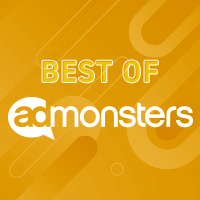When I put more copy in some of my makeovers than my anti-copy readers think I should, they may wonder if I’m just doing it to get their goat and draw more scornful e-mails. But that’s not it, folks, honest.
Here’s what I can’t understand. Seems like it’s OK to spread out lots of words of explanation for prospective customers at the “back end” — that is, the pages of copy and graphics at the advertiser’s Web site. But it’s not OK to expose those same prospects to more than a few telegraphic words in teeny type at the “front end” — i.e., the print ad that’s the doorway to the back end.
I think the reason may be partly a desire for corporate chic. The ad becomes a way of saying to the world, “Look, we’re so successful we really don’t need any more business right now. We just want to remind you that we are an elegant company.”
That may sound like I’m putting this down. I don’t mean to. I think you really can make a case for promotion of corporate chic — even though sometimes there’s a fine line between corporate chic and wasteful corporate vanity.
But I can’t help wondering if some middle ground in business-to-business advertising isn’t possible: Maybe a campaign that’s a mixture of corporate chic ads and more straightforward informational ads. Dignified and tasteful, but not avant-garde.
Another possible reason for print ads that seem obsessed with cleverness is the fallacious parallel with TV advertising. TV viewers (unless they have TiVo or another digital video recorder enabling them to fast-forward) are forced to sit all the way through one commercial interruption after another. So to make the sales message more palatable, advertisers often embed it in an amusing mini-video with entertainment value.
But print advertising is different. Readers aren’t forced to read every ad in a magazine or newspaper to get to the editorial. They’re free to glance at an ad, read some of one that interests them, read it all, or ignore it. So an ad aimed at a handful of prospects within the total readership needn’t be sugar-coated in order to force it down their throats. They are interested. They want the information, even though it may be completely boring to everybody else.
The ad I’ve chosen to make over is certainly chic and is meant to be somewhat entertaining. It looks like it could be exhibited in a design show at the Museum of Modern Art in New York.
The “headline,” if you want to call it that, is more like a sideline. It cleverly forms the front right leg of an ultramodern straight chair. It reads: “Faced with an ever-increasing amount of information, Crate and Barrel turned to us to help handle the load.” (“Handle the load of information” seemed to me a gross oversimplification of Crate and Barrel’s needs and SBC’s services.)
Then, in obligatory teeny-weeny sans serif type beneath the chair, there is some OK copy, although awfully cryptic.
I was tempted to do two makeovers this time. The first one would take the same headline, art and copy, and redesign the ad to make it more inviting and readable. But I didn’t attempt it, since I never got my art director badge. So instead I did a complete makeover.
I dared to say out loud what the ad is trying to tell prospects: “How SBC helped Crate and Barrel get organized nationwide.” To help lock the brand name into the message, I included it in the headline.
Then I dared to display Crate and Barrel’s needs in readable type.
Finally the body copy pays off this expectation with a brief explanation of what SBC accomplished and a connection for readers whose companies have similar needs.
For the illustration, I dropped the chair and substituted a picture of some storage units. They not only reinforce the “get organized” theme but even suggest an attention-getting paradox. Namely, how could a few paltry storage units help a big chain like Crate and Barrel get organized?
If someone wishes to accuse me of attempting to be clever, I will say again that I am all in favor of cleverness if it serves to enforce the basic message rather than obscure it.
Finally I displayed at the bottom not only the SBC logo but also an icon I found on its Web site identifying it as one of Fortune’s “most admired companies” — kind of an abbreviated testimonial to SBC’s achievements.
If the purpose of SBC’s advertising is to remind customers and prospect of its value, I think my makeover would do as good a job, and likely a whole lot better. And picking up just one new customer as a result might repay the cost of the ad many times over.
To e-mail comments and opinions: thomas.l.collins@verizon.net.
THOMAS L. COLLINS (thomas.l.collins@verizon.net) has been a direct marketing copywriter, admaker, agency creative director and co-author of four books on marketing. He is currently an independent creative and marketing consultant based in Portland, OR.



